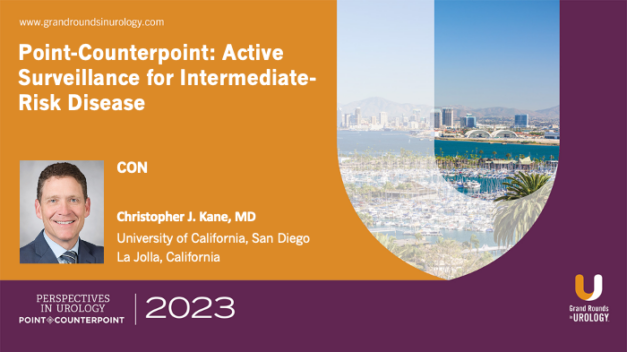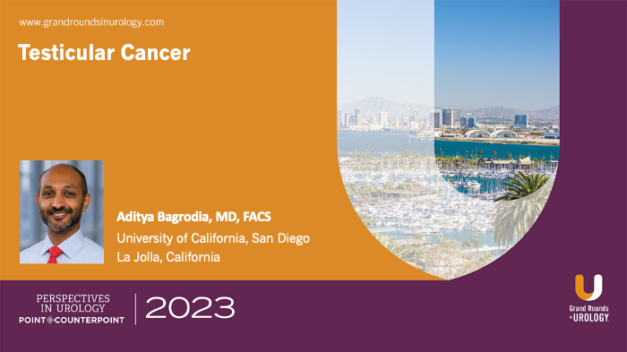Point-Counterpoint: Active Surveillance for Intermediate-Risk Disease – Con
Christopher J. Kane, MD, FACS, discusses active surveillance (AS) for intermediate-risk prostate cancer, sharing National Comprehensive Cancer Network (NCCN) Guidelines and defining favorable intermediate-risk disease. Dr. Kane shares the entry criteria for AS and then data from large randomized trials on treated vs. untreated patients that show more patients with intermediate-risk prostate cancer will die on AS as compared with radical prostatectomy, looking at data over a 20-year time horizon.
He then shares similar results from Prostate Intervention Versus Observation Trial (PIVOT) and ProtecT as well as data indicating that 50 percent of intermediate-risk patients on AS will end up with treatment within five years. Dr. Kane emphasizes that while the point of AS is to avoid overtreatment, for many intermediate-risk patients who begin with AS, treatment does occur but it occurs too late and they do not have the optimal outcomes that earlier treatment would allow.
Dr. Kane turns to progression and treatment rates for AS patients and points out that prostate-specific antigen (PSA) density is a key predictor of treatment. He shares his take-home points, including that favorable intermediate-risk prostate cancer patients are candidates for AS with comparable outcomes to low-risk disease on limited studies with short follow up. However, these patients are more likely to undergo treatment, even without reclassification/progression. He advises practitioners to consider other important clinical and pathologic factors such as percent pattern four, presence of cribiform patterns, and PSA density and the number of cores.
In conclusion, he asserts that in younger, favorable intermediate-risk patients, AS is not a sound management strategy in the hopes of avoiding treatment.
This lecture is part of a Point-Counterpoint debate. Its opposing lecture is “Point-Counterpoint: Active Surveillance for Intermediate-Risk Disease–Pro.”
Read More




